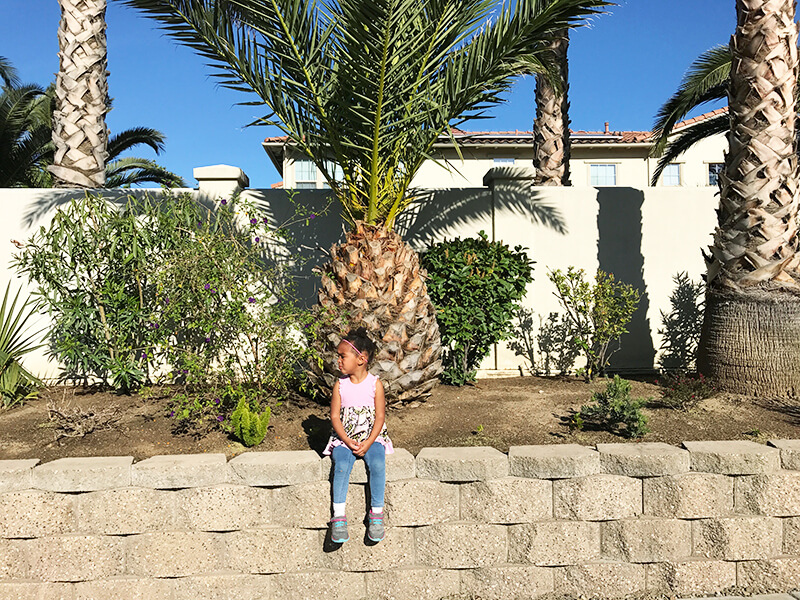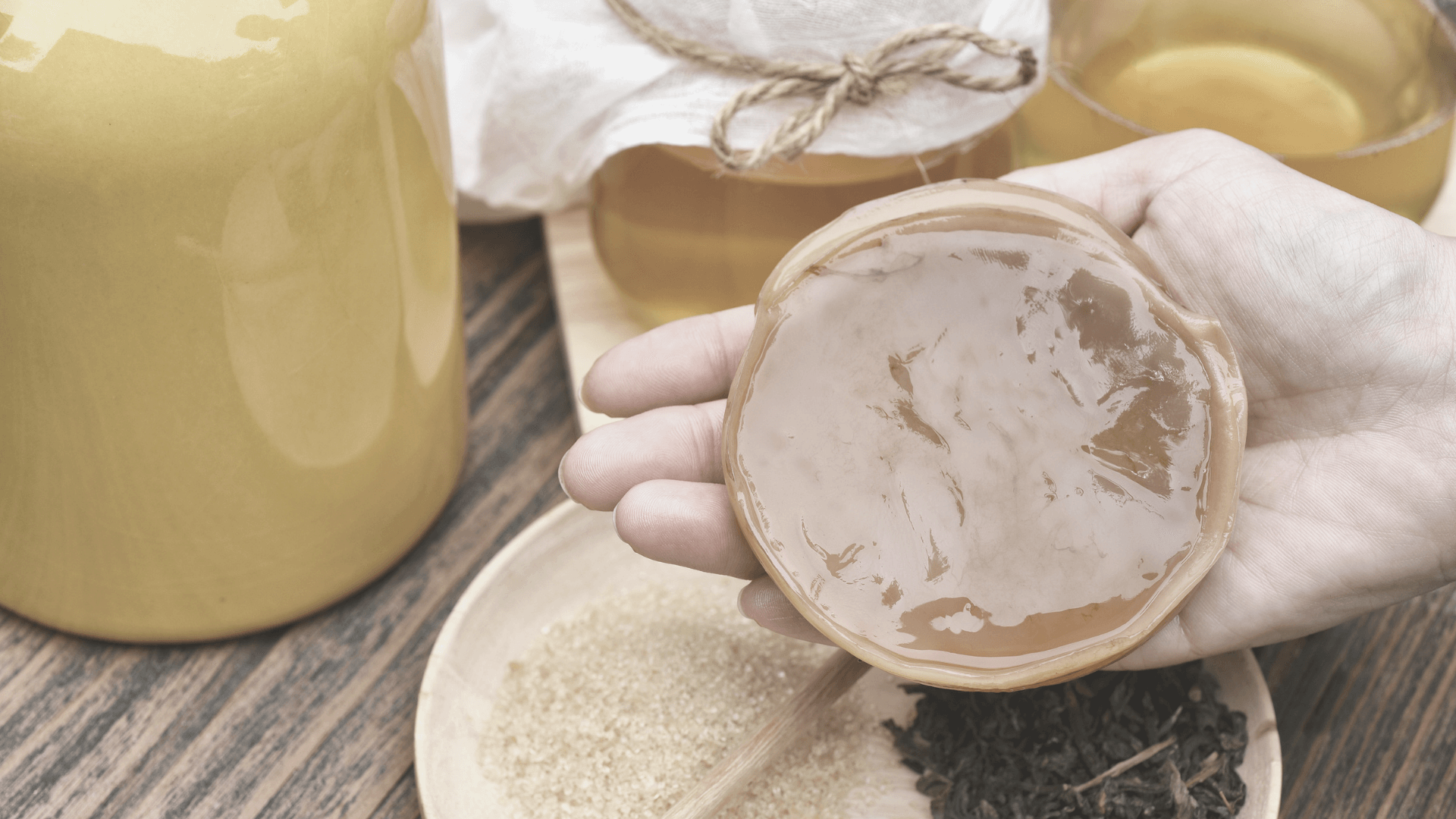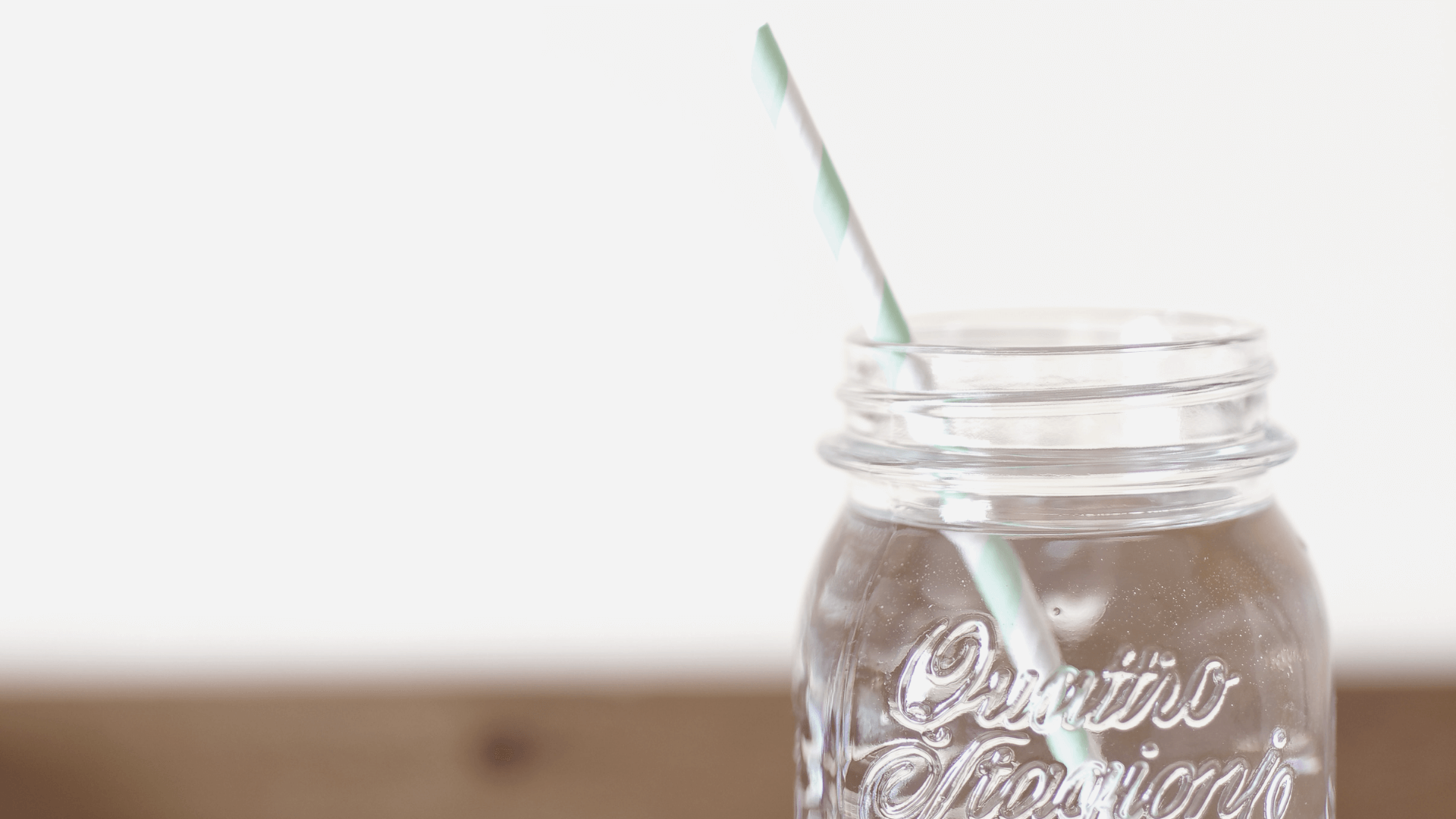I’ve created a constipation printable list of high fiber foods for you to use today.
What is Constipation?
There are actually so many nuances to constipation.
And, despite the fact that many will tell you that your constipation is simply coming from fiber-rich foods, that’s not the case – not at all.
Approximately 9%–20% of adults in the United States experience constipation. source
Constipation is correctly defined as the absence of more than three bowel movements per week.
However, the frequency with which a person “goes” varies significantly.
Some people have bowel movements multiple times a day, while others have one or two a week.
Whatever pattern of bowel movements you have, it is unique and natural for you – as long as you do not deviate too far from it.
However, one thing is sure: the longer you wait to “go,” the more difficult passing stool/poop gets.
The following additional characteristics typically define constipation:
- You have dry and firm stools.
- Your bowel movements are uncomfortable, and passing stools is difficult.
- You get a distinct impression that your bowels are not completely empty.
Furthermore, here is the overview for functional constipation criteria.
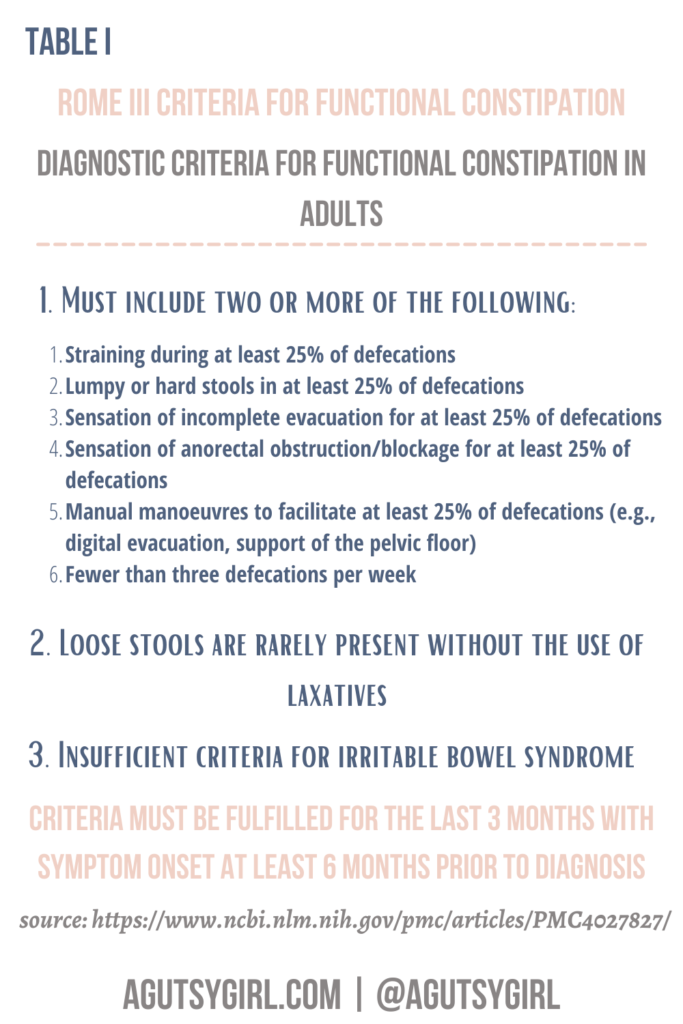
Constipation vs Bloating
One of the first things to pay attention to is that, while constipation issues can present themselves as stand-alone issues, oftentimes it is accompanied with bloat.
Epidemiologic studies have determined that 15–30% of the general US population experience bloating symptoms. source
So, what is bloat?
Bloating happens in the abdominal cavity (stomach).
It occurs when your gastrointestinal (GI) tract is partially or filled with air or gas. The gastrointestinal system extends from the mouth to the anus (bottom). It encompasses the entirety of your digestive system.
When bloated, you feel as if you have eaten a large meal and your stomach is full. It can be a source of discomfort or pain, and you might even physically notice that your stomach looks enlarged.
And yes, it may cause your garments to fit more snugly.
Bloating makes your stomach feel full and constricted, most frequently due to gas.
- Constipation: the act of having or not having a bowel movement, frequency of bowel movements
- Bloating: the feeling you get in your stomach (regardless of bowel movement or not) as if there is a balloon blowing up
However, constipation can exacerbate stomach discomfort and bloat.
The longer stool remains in your colon (from a delay in transit), and the more prolonged bacteria have to ferment it, the more likely it is for gas and bloat to occur.
What to do when you’re bloated and constipated?
So, you’re seeing yourself in these scenarios more frequently than not?
…..but you have no idea what to do?
This is where I come in; how I have helped thousands worldwide.
…..because I understand the nuances and also have lived through them; healing the dreaded constipation and bloat.
So before I even share with you my constipation printable list of high fiber foods, I want to give you other ways to address bloating and constipation – things you can start practicing and incorporating into your routine today.
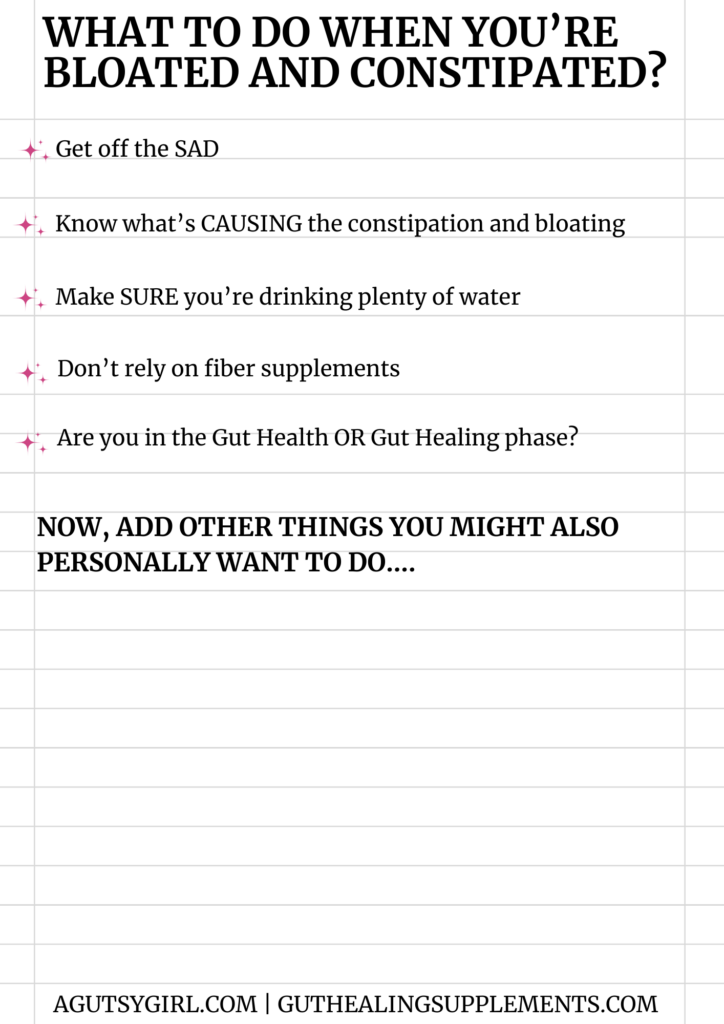
1. Get off the SAD (Standard American Diet)
The average American follows SAD, which stands for Standard American Diet. And what this means + includes are highly-palatable foods that more often than not void of essential nutrients and severely limit fiber intake.
The SAD is generally known as a “processed diet,” which is what most survive off of.
HERE ARE MY TOP 3 ISSUES WITH PROCESSED FOODS, AS THEY RELATE TO SICKNESS:
- Processed foods contribute to inflammation and inflammation throughout the body causes disease and sickness. source
- Processed foods are stripped of invaluable vitamins, minerals, and nutrients. They are pumped full of other artificial things which your body doesn’t know how to properly process.
- Processed foods will make you want more. The more processed foods we eat, the more we crave. We become hungrier, less satisfied and gain more rotten gut bacteria. Yes, it’s a vicious cycle. As long as we’re trapped in this cycle, we’re prone to imminent or lingering illness. In Episode 35 of the podcast, Illie aka recommended a read around this topic, “The Dorito Effect: The Surprising New Truth About Food and Flavor.”
The quicker you can detach from this way of eating, the sooner you’ll see an uptick in fiber consumption.
Learn more about what exactly constitutes Processed Foods HERE.
2. Know what’s CAUSING the constipation and bloating
There is a reason you’re feeling so much constipation and bloating and NO it’s NOT because you’re consuming too much fiber.
That’s not a reason; it’s perhaps just a contributing factor to what’s truly going on.
Underlying causes for all that constipation and bloating include things like:
- SIBO (small intestine bacterial overgrowth)
- Most constipation occurs when the large intestine removes too much water from the stool. This makes the stool hard and challenging plus painful to eliminate.
- Stress. Stress activates the sympathetic nervous system which turns off the body’s “rest and digestion” function. This makes it even more difficult to digest and mobilize food in the GI tract.
- Hypothyroidism
- Abdominal adhesions
- Gastroparesis secondary to insulin resistance
- Standard American Diet
- Eating disorders
- Certain medications
- Laxative abuse / pain-killer abuse
3. Make SURE you’re drinking plenty of water
Keeping properly hydrated is the best way to ensure fiber flushes through your system.
Here are just 3 reasons proper hydration is critical for your fiber goals AND overall digestion:
- Combats fatigue and more – Water will help combat: fatigue, headaches, hunger and sugar cravings. All of those can lead to digestive problems and/or the stress to cause digestive problems.
- Digestion – Water helps to move the digestive system along. If you are constipated, your lack of water could be the cause.
- Toxin elimination – Water helps to eliminate toxins from the body via sweat, urine, feces, etc. Toxins cause irritation and inflammations, damaging the gut even more.
4. Don’t rely on fiber supplements
Here’s the deal – so often when we go into our doctor or other healthcare professionals and tell them, “I’m dealing with a lot of constipation and bloating,” they automatically turn to fiber supplements like: psyllium husk, flax seeds, wheat bran, or even something more proper like Citrucel, Metamucil and Benefiber.
The problem with this, though, is that extreme amounts (via supplementation) if you don’t know the underlying cause to the constipation, could do you far more harm and have you feeling even more gas, bloating, and constipation.
If you can focus on a healthy diet of whole, fiber foods you’ll be able to control the amounts and sources far easier.
5. Are you in the Gut Health OR Gut Healing Phase?
There is a HUGE difference, and if you don’t understand the difference between the two, a high-fiber diet (right now) might not be your best option.
Learn all about gut health vs gut healing HERE.
Understand Fiber
There are different types of fiber, and this one is critical.
There is insoluble fiber and insoluble fiber and the type of fiber you choose can and will make a difference based on what’s causing the constipation and bloat.
I have already written about Soluble vs. Insoluble Fiber as the main types of fiber HERE, so be sure to check that out.
The Optimal Amount of Fiber to Consume
In How to Achieve Optimal Microbiome Diversity, I stated….
The Hadza get 100 or more grams of fiber a day in their food, on average. We average 15 grams per day.
Depending on age and gender, the recommended daily fiber goal is anywhere from 25-30g. While this is nowhere near what the Hadza get (who have no guidelines to follow), we still fall short of the daily recommended amount.
“Fiber’s all that’s left at the very end of our digestive tract where these microbes live, so they’ve evolved to be very good at digesting it,” said Justin Sonnenburg, PhD. He also stated, “We’re beginning to realize that people who eat more dietary fiber are actually feeding their gut microbiome.’”
And why is that? Because the fiber we eat feeds billions of bacteria in our guts. Keeping them happy means our intestines and immune systems remain in good working order.
Health Benefits of Fiber
In general, fiber is all parts of a plant-based food that cannot be digested or absorbed by the body. It is a complex carbohydrate that does not raise blood sugar levels.
And it’s an essential nutrient that we must get from our diet; the body does not make fiber on its own.
According to Mayo Clinic, here are 6 health benefits of fiber:
- Normalizes bowel movements
- Helps maintain bowel health
- Helps achieve lower cholesterol levels
- Can control blood sugar levels
- Aids in achieving healthy weight
- Helps you live longer
Constipation Printable List of High Fiber Foods
Click HERE to save this constipation printable list of high fiber foods for later.

Without further ado and now that I have gone over the basics for what you should understand before ever moving forward on fiber for constipation, here is my constipation printable list of high fiber foods (59 specifically).
- acorn squash
- almonds
- apples
- apricots
- artichokes
- avocados
- bananas
- barley (not gluten-free)
- beets
- black beans
- blackberries
- blueberries
- bran (not gluten free)
- broccoli
- brown rice
- Brussels sprouts
- carrots
- cauliflower
- celery
- chia seeds
- chickpeas (garbanzo beans)
- coconut (flakes and flour)
- collard greens
- edamame (soy beans)
- figs
- flaxseeds
- green beans
- guava
- hazelnuts
- inulin, which contains all of THESE foods
- kale
- kidney beans
- lentils
- lima beans
- navy beans
- nectarines
- oats (oatmeal; not always gluten free)
- okra
- peanuts
- pears
- pecans
- pinto beans
- prunes
- psyllium
- quinoa
- radishes
- raspberries
- rutabaga
- seaweed
- spinach
- split peas
- strawberries
- sunflower seeds
- sweet potatoes
- turnip greens
- turnips
- walnuts
- wheat bran and wheat germ
- whole wheat pasta (not gluten free)
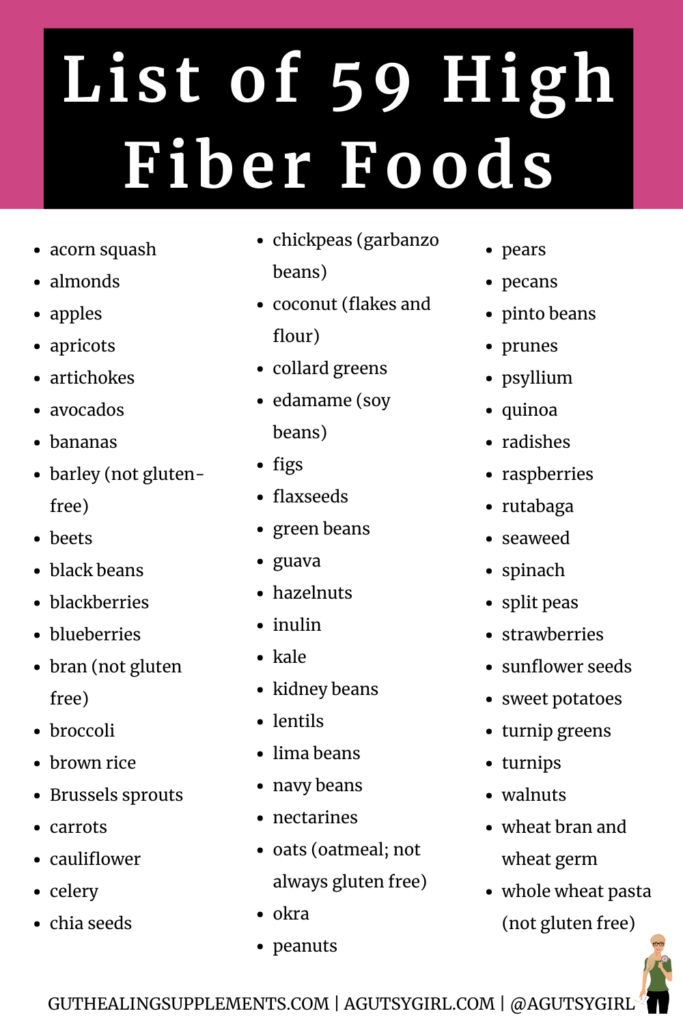
High-Fiber + Low-FODMAP
In the even that you DO have something like SIBO (small intestinal bacterial overgrowth), then you might need options that are high-fiber but low-FODMAP.
And I have that list of foods for you, too.
By following THIS list, you can ensure you’re getting enough fiber but without all the extra gas, bloating, and constipation.
Consuming these foods is a great way, also, to know if it’s the fiber itself OR perhaps something else going on in the gastrointestinal tract.
Your Comprehensive Tool Kit for Constipation + Fiber

If you need even more help in understanding which foods you can successfully eat to ensure a fiber-rich diet AND have the ability to digest them better, here are 5 things for your tool kit:
1. FoodMarble Aire
The FoodMarble Aire is a portable breath testing machine that measures gases produced in response to certain foods.
You can use it after a meal or snack to test how your gut is responding to what you just ate.
The FoodMarble app gives a fermentation score, which is made by comparing the levels of methane and hydrogen gases in your breath after eating.
You can log all of these scores in relation to the meals you consume, which helps clearly find some problem foods.
Use code GUTSYG at checkout to save an automatic 15% off the device +/or FODMAP program
2. Break Down
This is one of our top-selling supplements because it works!
Break Down is a digestive enzyme and digestive enzymes help turn larger molecules found in foods (carbs, protein and fats) into more easily absorbed particles (such as amino acids, fatty acids, cholesterol, simple sugars and nucleic acids).
The body can then actually use these particles to function and for energy.
Using Break Down prior to consuming different amounts of fiber might be my best hack for instantly seeing positive results.
Learn all about digestive enzymes HERE.
3. Viome Gut Microbiome Test
Viome is a testing kit which aims to help you discover the precise food and supplements for your body in order to restore microbiome health.
Though these kits are all the rage currently due to the explosion of gut health interest and curiosity, they are pretty commonplace at this point for you and me.
We have been interested in the health of our gut microbiomes for a very long time now!
The difference is that with companies like Viome, we can get very granular…..as long as they are accurate.
Through the Viome technology, here are some of the things you will learn:
- If your microbiome is not able to process nutrients in various foods
- How your microbes digest the amount of protein you are eating.
- If some of those healthy antioxidants you’re eating aren’t really benefiting you.
- If you’re eating too much iron and promoting the growth of unwanted bacteria.
See my personal Viome gut microbiome test results HERE.
By using code AGUTSYGIRL at checkout HERE, you will save $110 off your own testing kit OR use code AGUTSYGIRL10 and go HERE to get $10% off 12 months on one of your monthly health plans.
4. Gut Healing Journaling SYSTEM
And last, but certainly not least – KEEP a food and lifestyle journal to record everything that’s happening when you do or don’t consume a high-fiber diet.
Not only does THIS system teach you how to track properly, but there is also a list where you can keep track of the foods you know for SURE are and are NOT working for you.
You can get instant access to the system HERE or have us ship you a journal in the mail HERE.
5. Master Gut Healing Resources
Remember, I have lived through and healed all chronic constipation and bloating.
And thus, I have a Master Gut Healing Resources tool kit to help you achieve the same.
This resource bundle includes the journal noted from above, so you don’t have to purchase both.
All resources, in one place, to help you heal TODAY!
I hope this blog post has been highly valuable for you in determining the appropriate consumption of high-fiber foods for you.
Remember, the ENTIRE scope of getting rid of constipation and bloating is 100% individualized.
While it’s always a good idea to get basic recommendations from your doctor or other practitioner, it’s an even better idea to listen to your own body.
If you liked this post on my constipation printable list of high fiber foods, you might also enjoy:
- Printable Candida Diet Food List (take this grocery shopping!)
- IBS or Colon Cancer
- Small Changes; Things Can Change
Disclosure: All opinions started here are 100% my own. I appreciate your support, as this compensation helps with expenses to keep this website up and running, and for me to continue sharing all that I can with you. Some of the links in this post are affiliate links. This means if you click on the link and purchase the item, I may receive a small commission at no extra cost to you.
Xox,
SKH
🤰 bloating be gone! weight loss through optimal gut health for women
💃ʜᴇᴀʟ ʏᴏᴜʀ ɢᴜᴛ. ʜᴇᴀʟ ʏᴏᴜʀ ʟɪfe.
🫶🏻 founder gutbyome.com

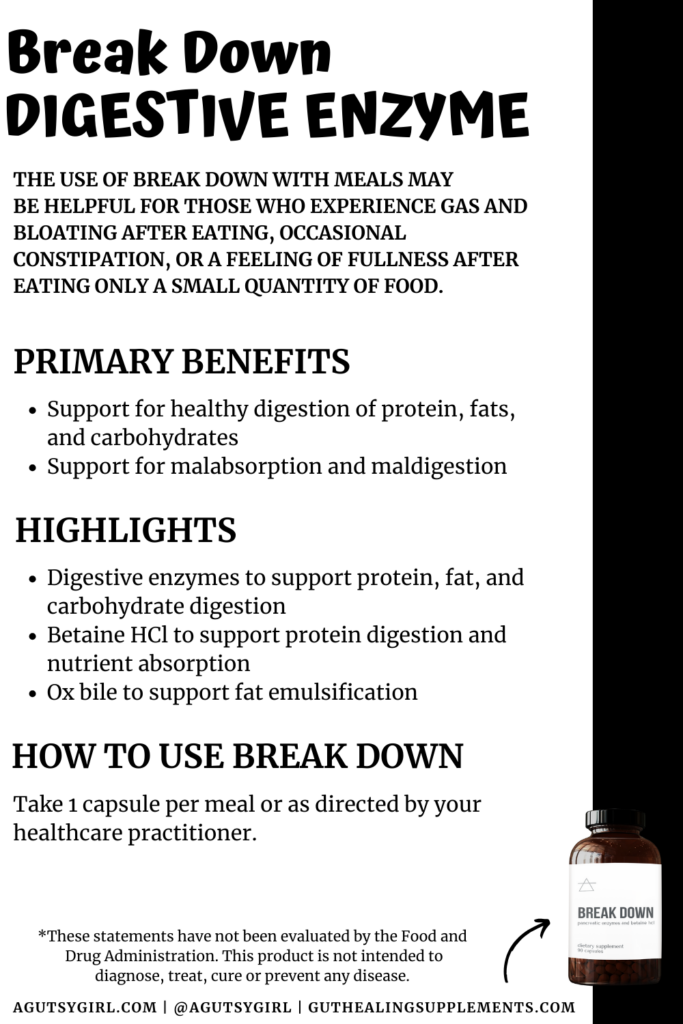
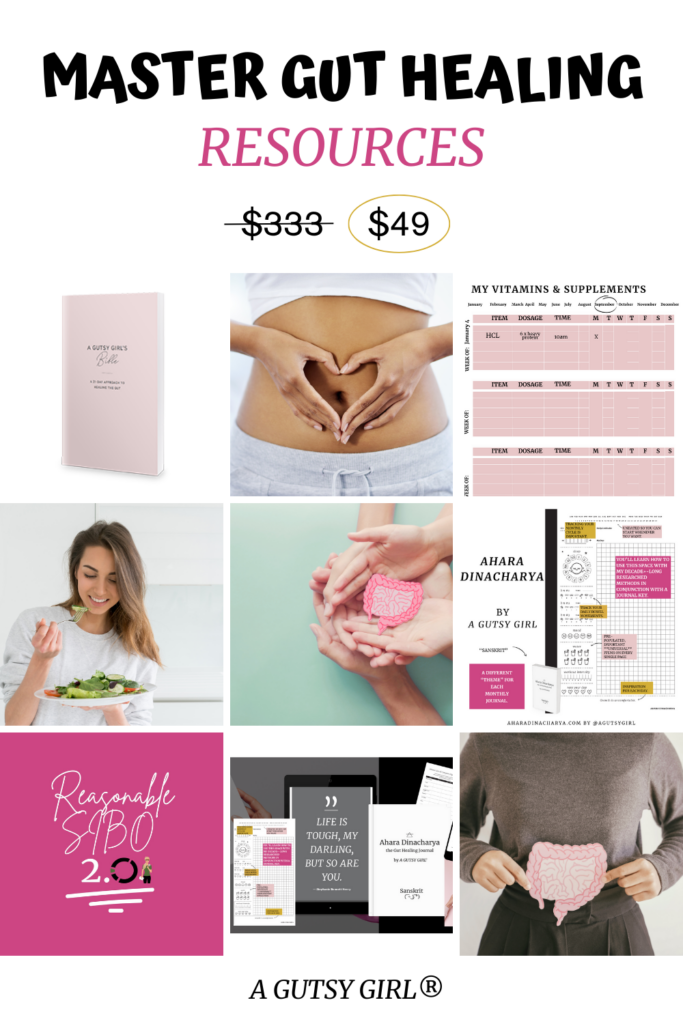

![Real Talk [Your Gut, Your Healing]](https://agutsygirl.com/wp-content/uploads/2023/12/real-talk-featured-image.png)
